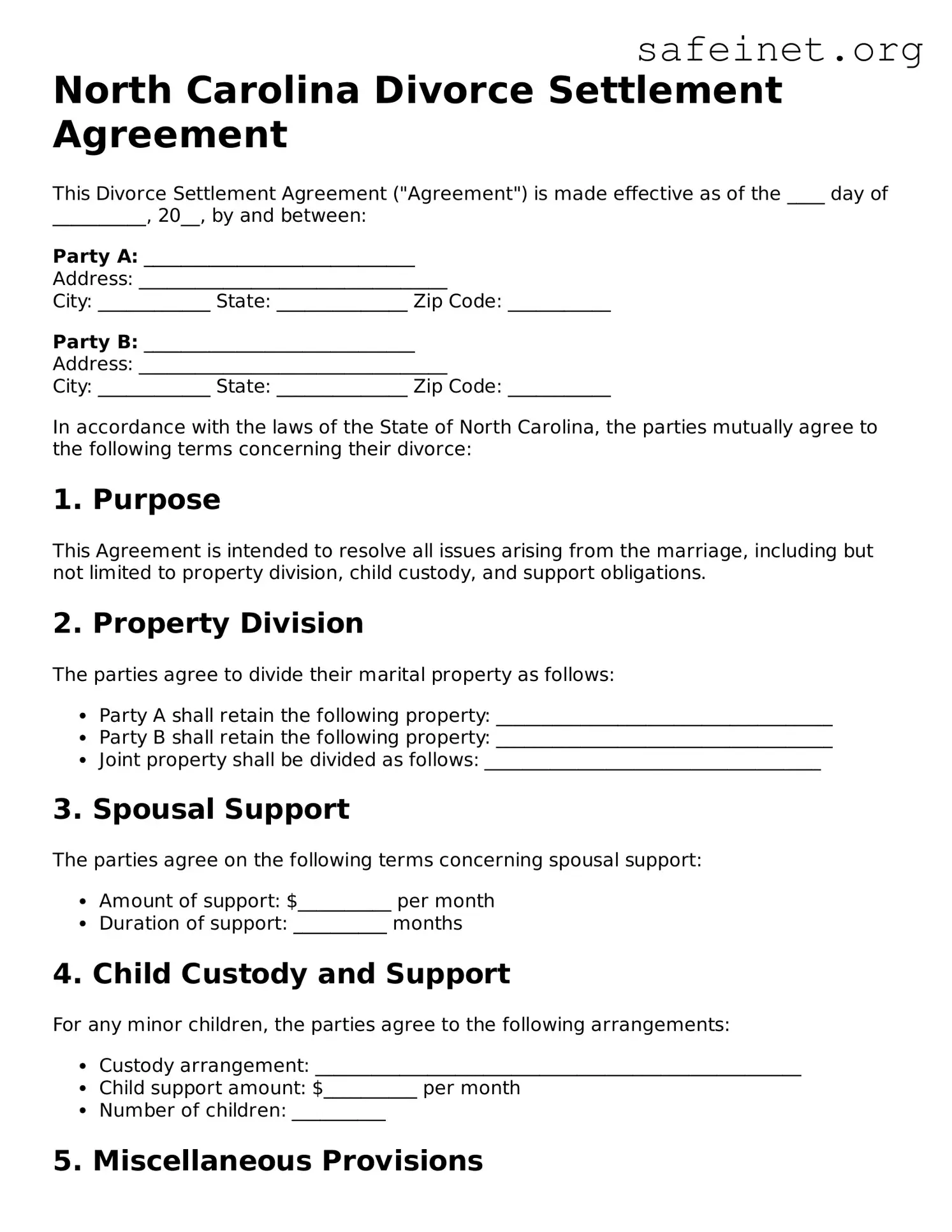North Carolina Divorce Settlement Agreement
This Divorce Settlement Agreement ("Agreement") is made effective as of the ____ day of __________, 20__, by and between:
Party A: _____________________________
Address: _________________________________
City: ____________ State: ______________ Zip Code: ___________
Party B: _____________________________
Address: _________________________________
City: ____________ State: ______________ Zip Code: ___________
In accordance with the laws of the State of North Carolina, the parties mutually agree to the following terms concerning their divorce:
1. Purpose
This Agreement is intended to resolve all issues arising from the marriage, including but not limited to property division, child custody, and support obligations.
2. Property Division
The parties agree to divide their marital property as follows:
- Party A shall retain the following property: ____________________________________
- Party B shall retain the following property: ____________________________________
- Joint property shall be divided as follows: ____________________________________
3. Spousal Support
The parties agree on the following terms concerning spousal support:
- Amount of support: $__________ per month
- Duration of support: __________ months
4. Child Custody and Support
For any minor children, the parties agree to the following arrangements:
- Custody arrangement: ____________________________________________________
- Child support amount: $__________ per month
- Number of children: __________
5. Miscellaneous Provisions
The parties further agree to the following:
- This Agreement represents the entire agreement between the parties.
- Any amendments must be made in writing and signed by both parties.
- This Agreement shall be governed by the laws of the State of North Carolina.
6. Signatures
IN WITNESS WHEREOF, the parties have executed this Divorce Settlement Agreement as of the date first above written.
_____________________________
Party A Signature
_____________________________
Party B Signature
_____________________________
Date
